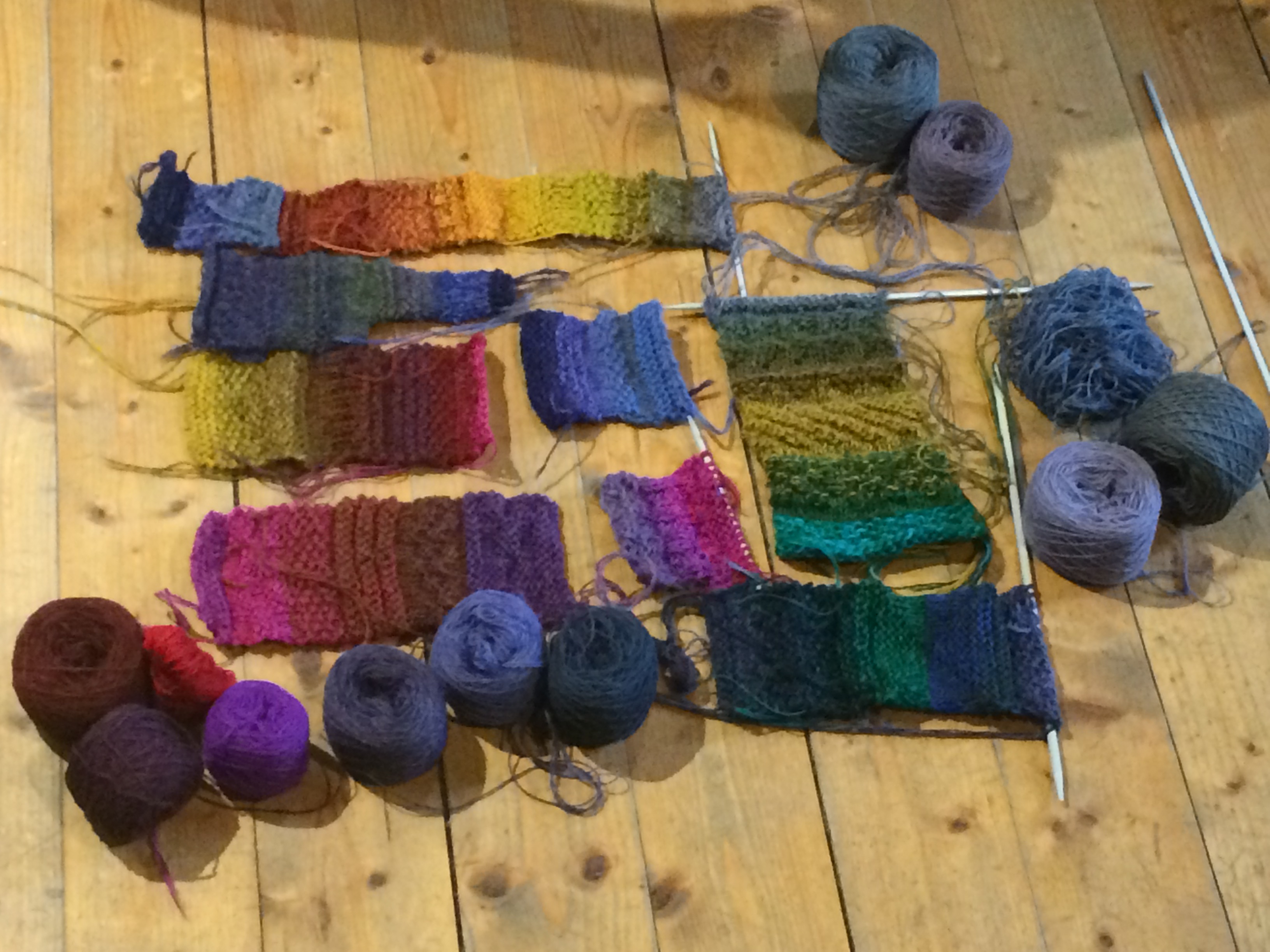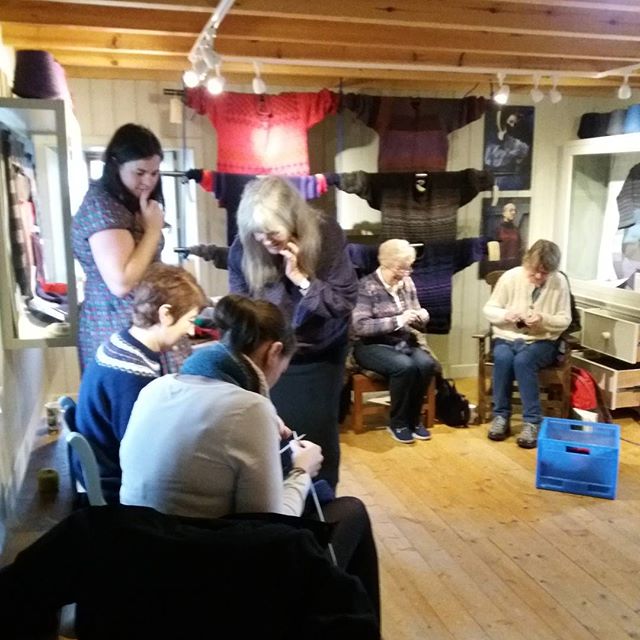What makes knitted fabric really special, is that it doesn’t seem hi-tech at all. It speaks an emotional and sensual language that we all respond to and inspires love and even obsession.The love in choosing yarns and colours, making every stitch and then after casting off the finished project, passing it on to a knitworthy loved one or walking off into the wild blue yonder wearing your latest FO with pride.

Equally, it is our love of knitting and crafting that enables us to share our skills and knowledge with other knitters. From the Australian knitter who taught me how to make a pompom for my Bousta Beanie on my first day at Shetland Wool Week, to the Shetland knitters in my ‘Colours with Victoria Gibson’ workshop in the Shetland Textile Museum, who taught me how to use a Makkin belt (knitting belt) during my class and inspired my second trip to a yarn store in 24 hours.
One knitter, I met during my short stay in Lerwick during Wool Week described knitted fabric as something incredibly personal – handwriting. Knitting and handwriting are so similar, the making of stitches and penmanship of letters is as an individual to each knitter’s finished projects and the handwritten letters we love to receive in the post with woolly care packages that circumvent the globe year in and year out.

Knitted fabric brings together communities of people. Farmers, shearers, scourers, spinners, dyers, and crafters all come together to produce every single ball, hank or skein of yarn. This new craft industry is not just an employer, also it is a small ecosystem of makers and curators. The sector has not given birth to many super-companies yet but neither has the much-vaunted UK tech sector. Instead, both have created not corporate monoliths but hundreds, maybe thousands, of small, highly specialised firms that are transforming our economy and the relationship between producer and consumer has never been more important. It is the small producers and workshops that provide the backbone of our industry, our community of makers. Yarn and wool isn’t just a hobby for us, it is the lifeblood of our community.
The arrival of social media has given the customer a virtual stash at their fingertips, many hours have been lost to Instagram and Ravelry. Designers from all four corners of the globe can show off their latest and greatest pattern designs to an audience of millions, 24 hours a day. British Yarn companies send their wares to far-flung knitters every day of the year; Iceland, Siberia and Japan, to name but a few. We wait with anticipation for the latest episodes of popular podcasts to accompany us on our commute to work while we continue our work with wool. Bringing together the centuries of tradition with the modern.
Events like Shetland Wool Week and Bendigo Wool and Sheep Fair (to name just two) further spark the crafter’s desire and need to engage with producers on a personal level. To ask them, why have you chosen that particular blend; where has it come from; was the farmer paid a fair price for its fleece? This information and transparency matter to all of us, we ask producers no matter how big or small, all of these questions. All of this stems from a very simple question – what are you working with at the moment? Don’t be afraid to ask questions and share the answers you receive, because everyone working together in this community keeping the traditions of wool alive matters.
This is why I love to use wool when I knit, crochet or sew, by buying and using wool and supporting the wool industry, we support a vast community of people, by investing our time and sharing our knowledge, we can sustain our culture of handcrafts for the future. Because as individuals we can do so much more than we ever thought possible.
Emma Ross is the author of the Girl In Knits blog. You can read this at https://girlinknitscrafts.wordpress.com/ and you can follow her or twitter and Instagram as girlinknits